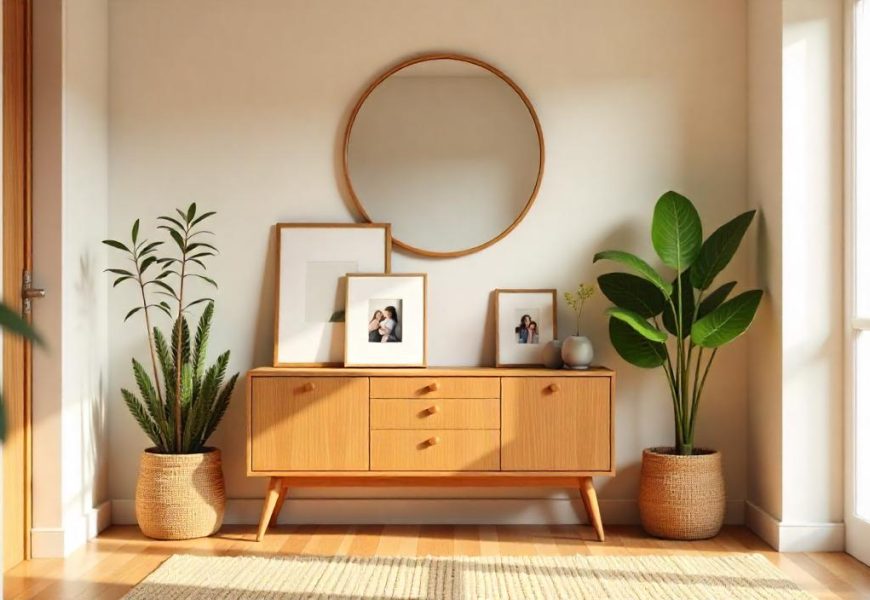Selecting high-quality furniture is an essential investment that enhances your home’s aesthetics, comfort, and functionality. However, with countless options available in the market, it can be overwhelming to make the right choice. Many homeowners end up with pieces that look good initially but don’t stand the test of time. To avoid costly mistakes, it’s crucial to understand what to look for when purchasing furniture. Below, we’ll take you through seven essential steps to help you choose furniture that is not only stylish but also durable, sustainable, and comfortable.
1. Understand Your Space and Needs
Before purchasing furniture, it’s important to analyze your space and assess your specific requirements. Furniture that fits well in a studio apartment may not suit a larger home, and the needs of a family differ from those of a single individual.
- Measure your room dimensions: Knowing the exact size of the room helps ensure that the furniture fits perfectly without overcrowding the space. You’ll also want to measure doorways and hallways to avoid delivery-day surprises.
- Determine the function of each room: Think about how you will use the space. For example, a living room meant for entertaining guests might need a L shape sofa and coffee table, while a cozy reading nook would benefit from an armchair and side table.
- Create a rough layout: Sketching a room layout helps you envision how different pieces will fit together. This also prevents impulse buying of furniture that may not suit the overall design.
By understanding your space, you can narrow down your options and avoid clutter or mismatched furniture that compromises the flow of the room.
2. Set a Budget but Aim for Value Over Cost
When it comes to furniture, the cheapest option isn’t always the best. High-quality furniture may cost more initially but offers better durability, which saves money in the long run. Establish a realistic budget that reflects the quality you are aiming for.
- Prioritize essential pieces: Focus on items like sofas, beds, and dining tables that you use daily. These should take a larger share of your budget.
- Balance affordability and quality: Be cautious about deals that seem too good to be true. While it’s tempting to go for the lowest price, poorly made furniture will wear out faster, costing you more over time.
Look for pieces that offer value—durable furniture that will remain in excellent condition even after years of use.
3. Check for Sturdy Frame Construction
The foundation of high-quality furniture lies in its frame. A well-constructed frame ensures the piece will retain its shape and strength over time, especially with heavy use.
- Materials matter: Opt for solid wood frames, such as oak, walnut, or maple, which are known for their strength and longevity. Avoid particleboard or plastic frames that are prone to breaking.
- Joints and fasteners: Quality furniture typically uses dowels, screws, and corner blocks to reinforce joints. Pieces held together with staples, glue, or nails tend to fall apart more quickly.
- Test the piece: If possible, sit on chairs or sofas before buying. They should feel solid, not wobbly. Check if drawers open smoothly and if cabinet doors are aligned properly.
Durable frame construction ensures that your furniture can withstand wear and tear, making it a worthwhile investment.
4. Examine Upholstery and Fabric Quality
The fabric or upholstery on a piece of furniture plays a significant role in its durability and aesthetics. High-quality upholstery not only enhances comfort but also ensures the furniture stays in good condition for years.
- Fabric type: For sofas or armchairs, look for tightly woven fabrics like cotton, linen, or leather, which offer durability and easy maintenance. For households with pets or children, microfiber or performance fabrics are ideal since they resist stains.
- Stitching and seams: Inspect the stitching to ensure it’s even and secure. Loose threads or crooked seams can indicate poor craftsmanship.
- Cushion fill: Look for high-resilience foam, feather-blend cushions, or innerspring support to maintain comfort and shape over time. Cheaper cushions may flatten quickly, leading to discomfort.
By paying attention to fabric quality, you can ensure that the furniture looks great and performs well in your home environment.
5. Consider Ergonomics and Comfort
No matter how beautiful a piece looks, if it isn’t comfortable, it won’t be a good fit for your home. Ergonomics refers to how well furniture supports your body, helping reduce discomfort and fatigue.
- Test seating comfort: Sit on chairs or sofas to see if they offer good lumbar support. The seat height should feel natural and not force you to slouch or strain.
- Choose appropriate firmness: Some people prefer firm cushions, while others like softer ones. When buying a mattress or sofa, make sure it aligns with your comfort preferences.
- Armrests and backrests: For dining chairs or office furniture, ensure armrests and backrests are at a comfortable height to prevent strain on your shoulders and spine.
Comfort plays a key role in whether you’ll enjoy using your furniture, so always test it out if possible.
6. Check the Craftsmanship and Attention to Detail
The craftsmanship of a piece is a telling indicator of its quality. Pay attention to the finer details to identify whether the furniture has been carefully crafted.
- Smooth finishes: Wood furniture should have a smooth, even finish with no rough edges or visible splinters.
- Aligned patterns: For upholstered items, check if patterns and seams are aligned properly. Mismatched patterns suggest poor assembly.
- Well-secured components: Ensure all drawers, legs, and hinges are tightly attached. Loose components can indicate inferior quality and poor longevity.
Furniture with excellent craftsmanship will not only look visually appealing but also stand up to everyday use over time.
7. Research the Manufacturer and Read Reviews
Lastly, it’s important to research the brand or manufacturer before making a purchase. Reputable brands are more likely to provide high-quality furniture backed by warranties and excellent customer service.
- Check online reviews: Read reviews from other buyers to get an idea of the furniture’s durability and the company’s service. Look for comments about how the pieces have held up over time.
- Warranty information: A good warranty reflects the manufacturer’s confidence in their product. Make sure to understand what is covered under the warranty, such as frame damage or upholstery issues.
- Ask questions: Don’t hesitate to ask the sales representative about the furniture’s materials, construction, and care requirements. A knowledgeable salesperson can provide insights that help with your decision.
Thorough research ensures you’re buying from a reputable source that offers quality furniture and reliable after-sales support.
Final Thoughts
Choosing high-quality furniture requires a careful balance between aesthetics, comfort, durability, and value. By following the seven steps outlined above, you can make informed decisions that lead to furniture purchases you’ll love and enjoy for many years. Start by assessing your space and setting a budget, then focus on evaluating materials, craftsmanship, and comfort. Don’t forget to read reviews and research the manufacturer to ensure you’re buying from a trusted source.











